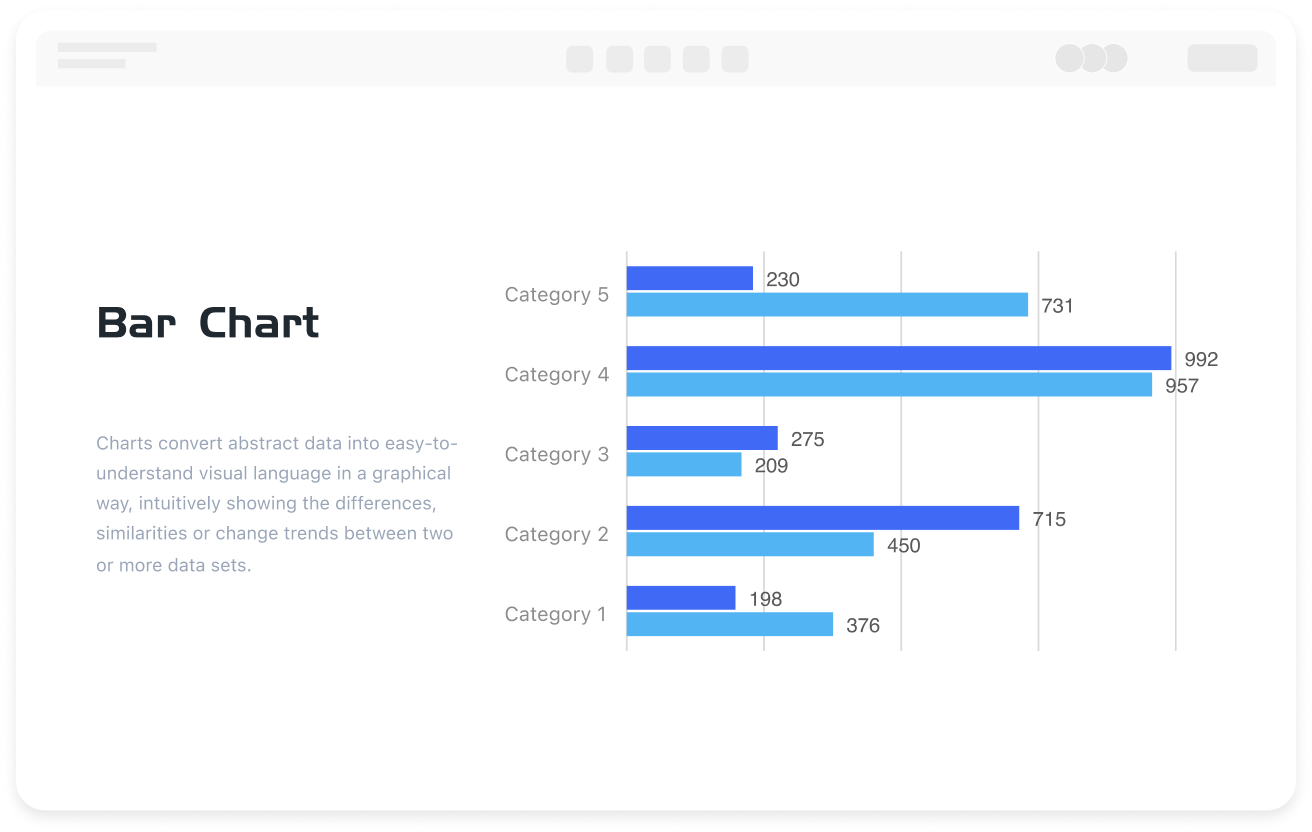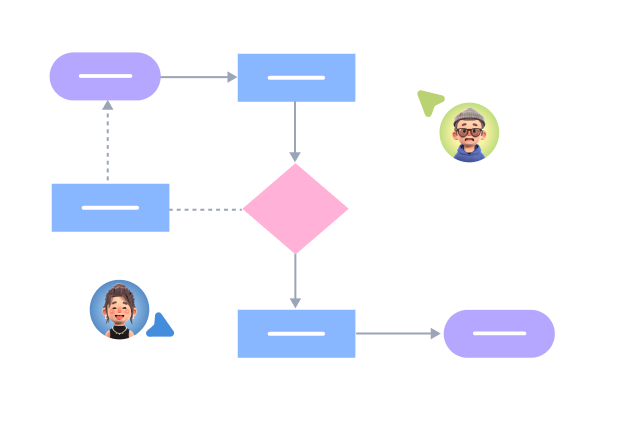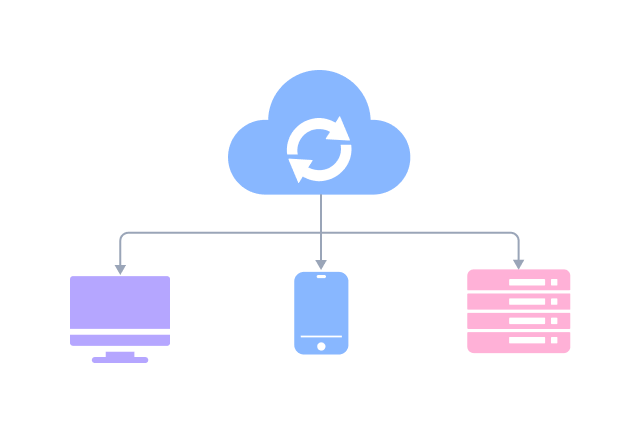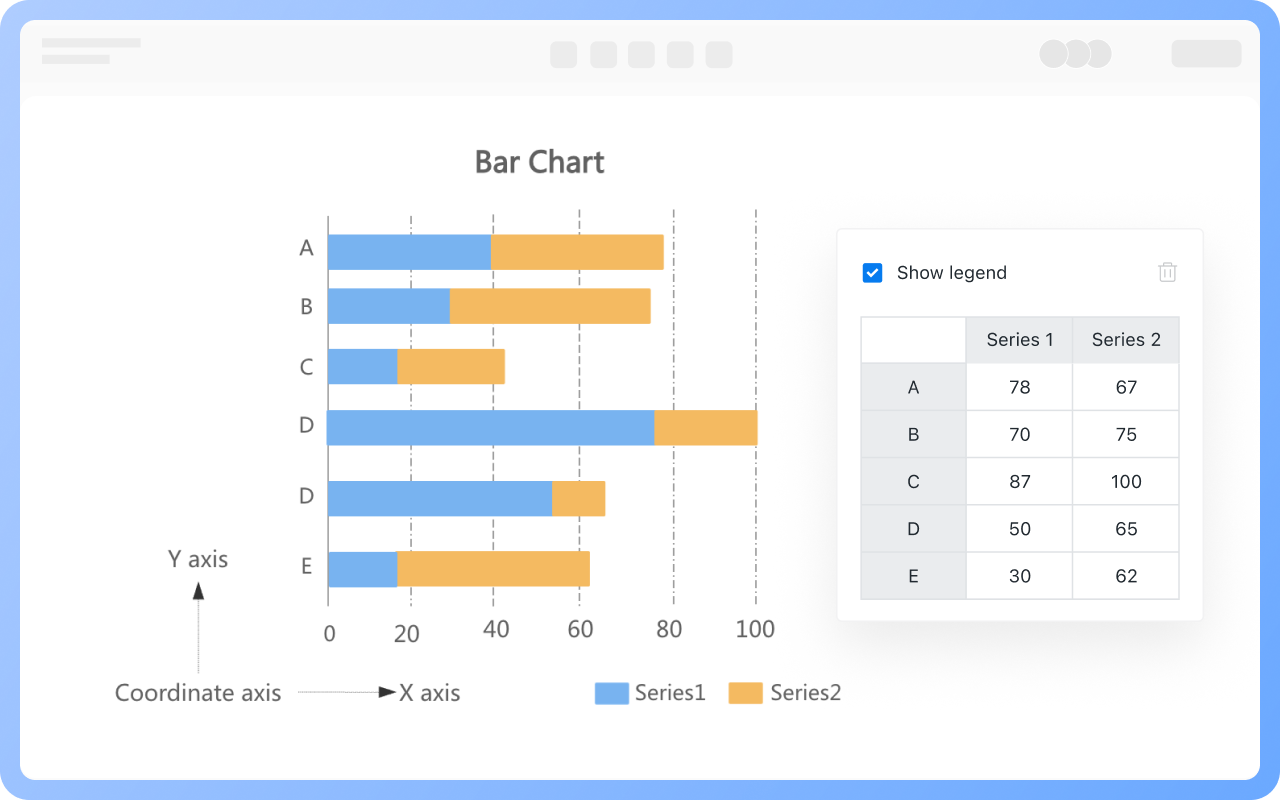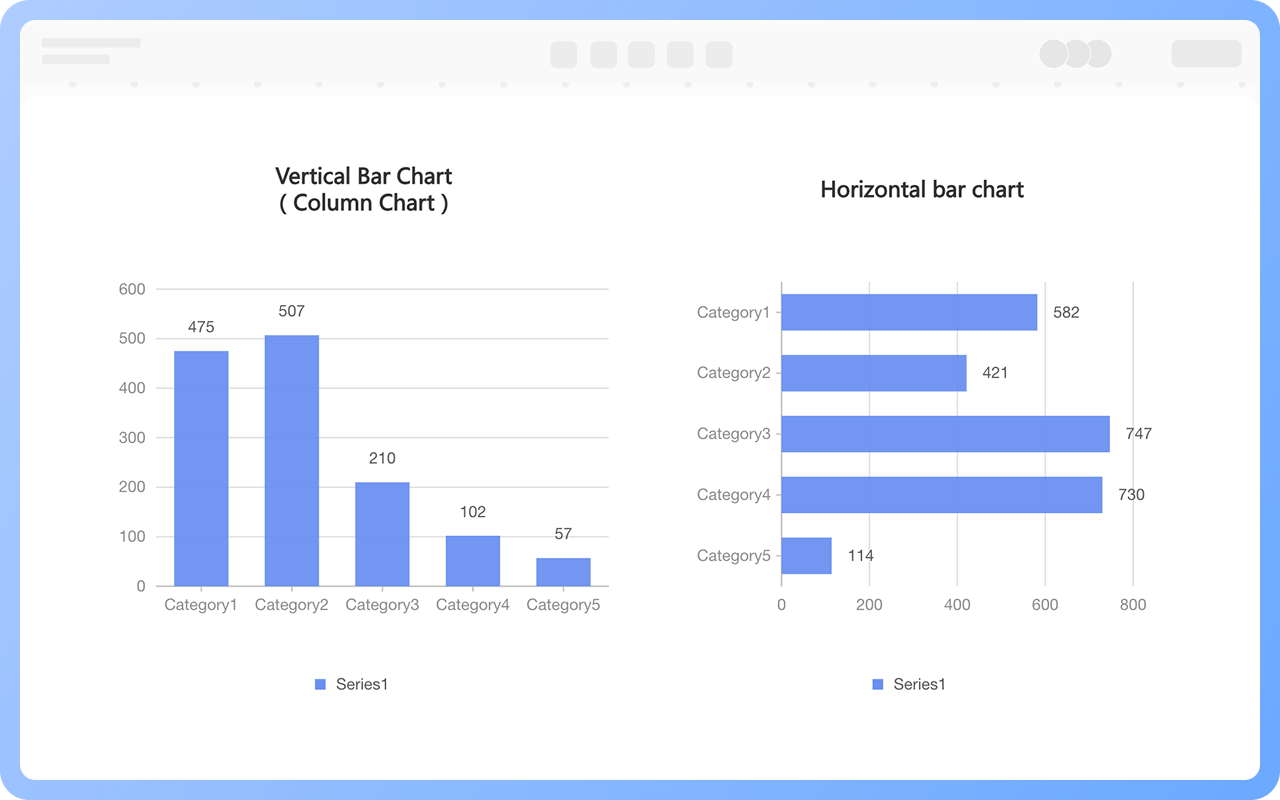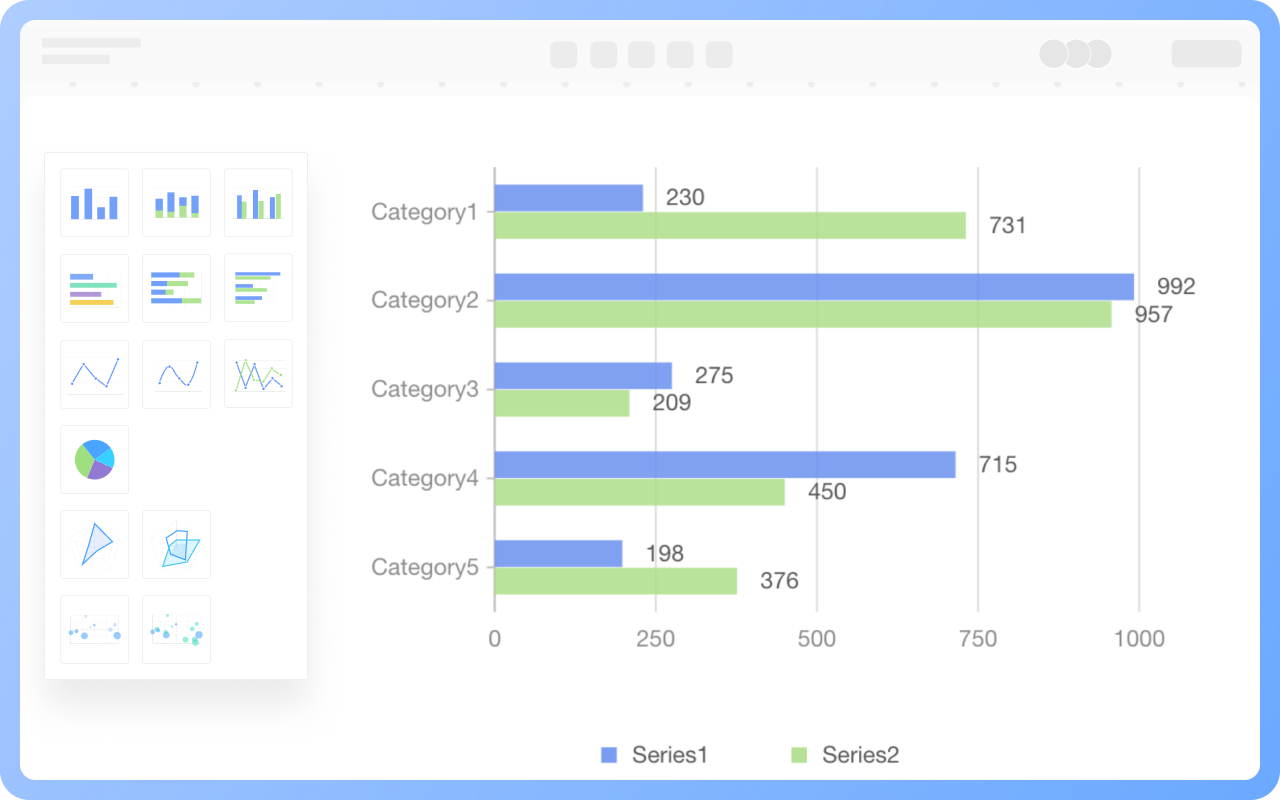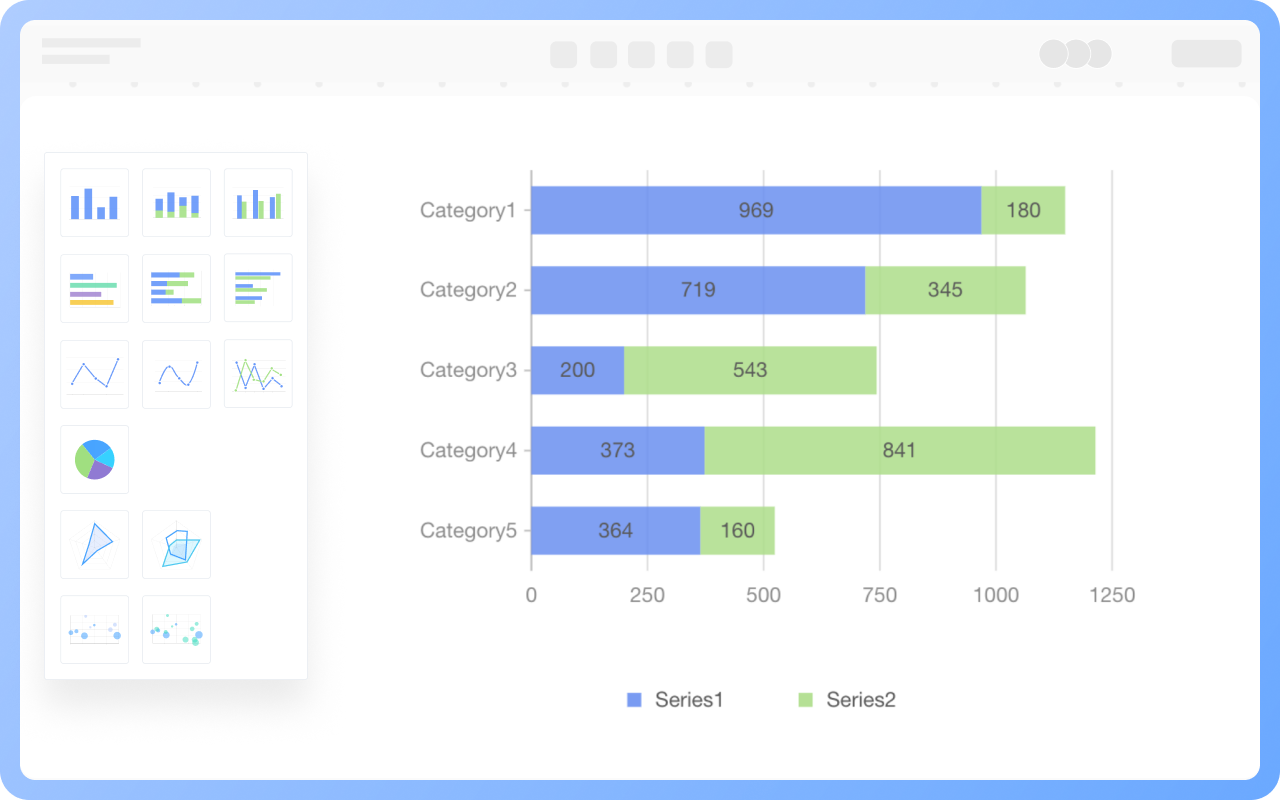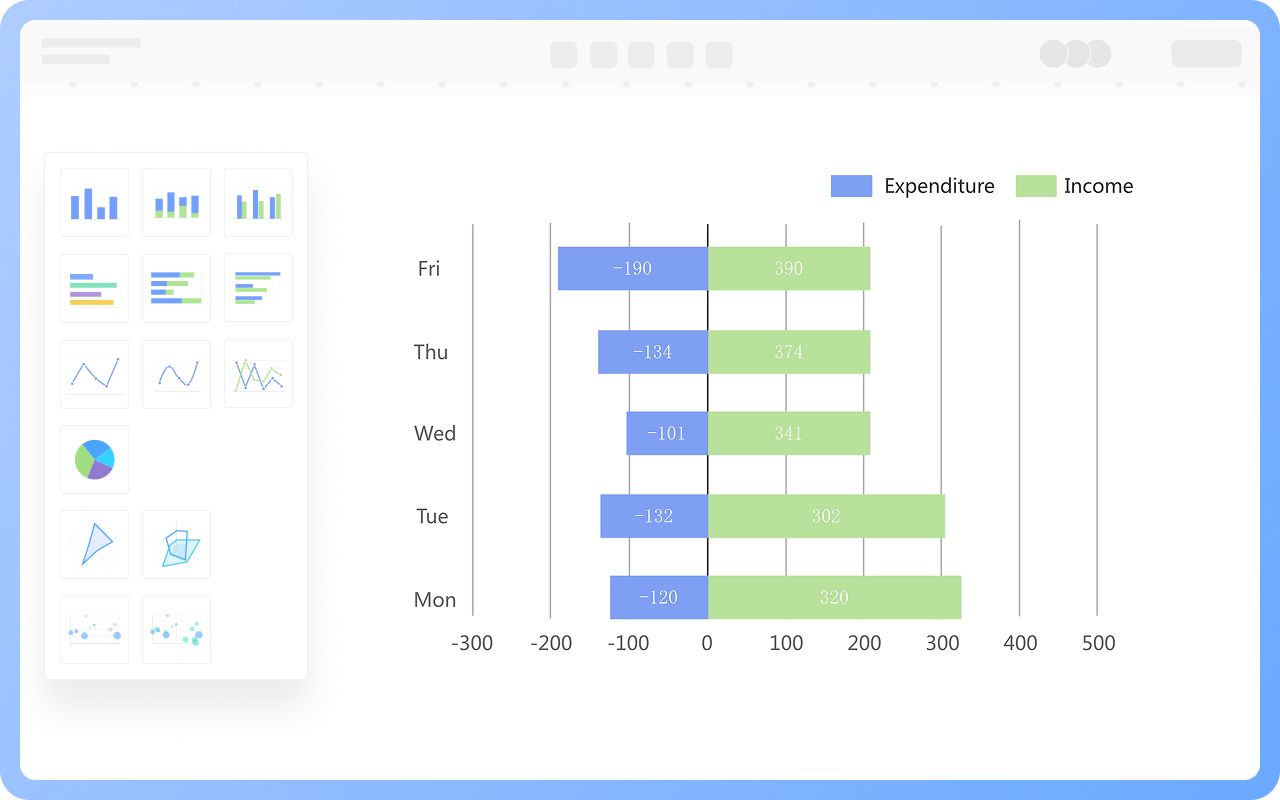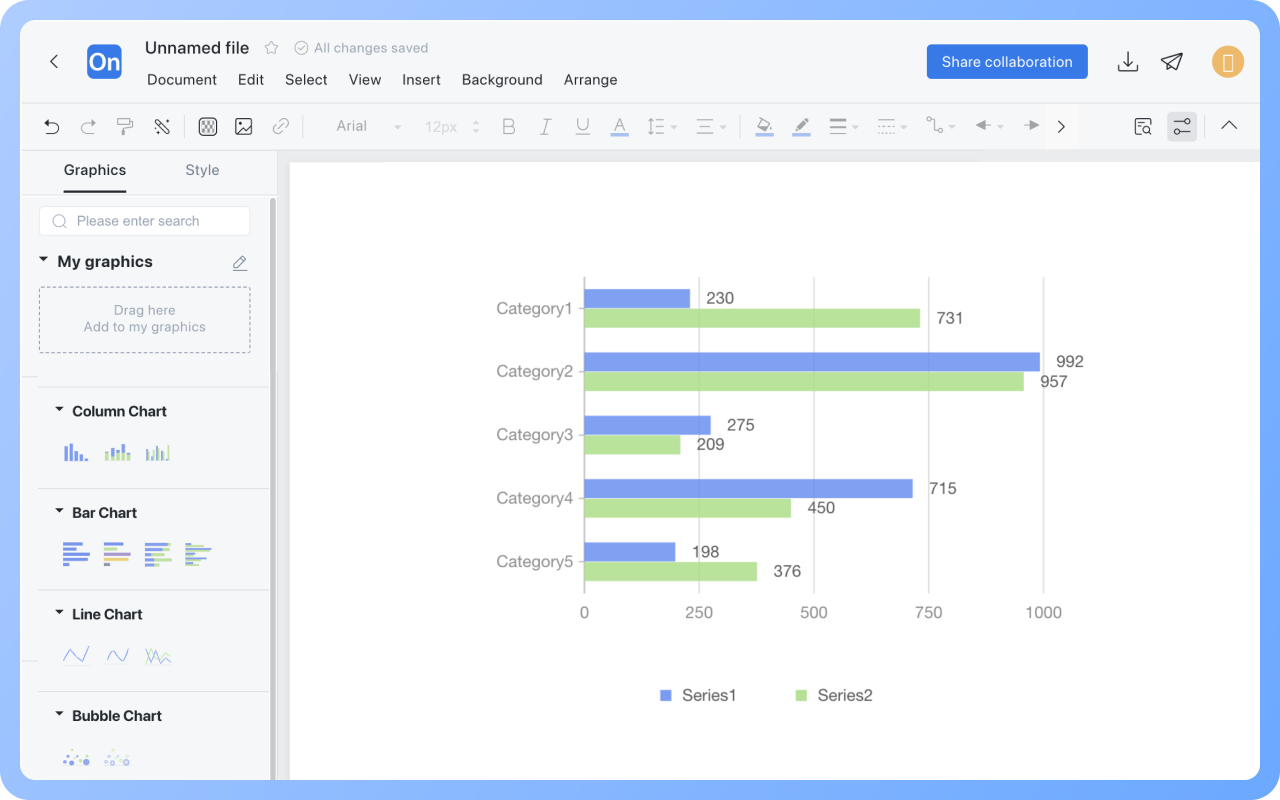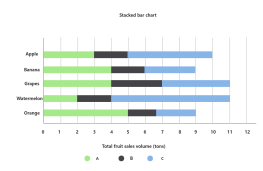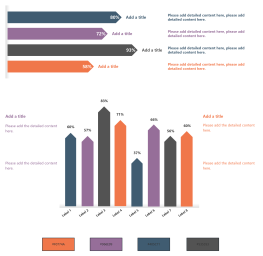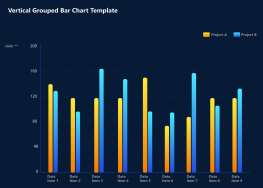Types of Bar Charts
Bar charts are divided into vertical bar charts (column charts) and horizontal bar charts based on direction.
Vertical bar charts are the most traditional form, with the horizontal axis representing categories and the vertical axis representing values. They are suitable for comparing single values across different categories, such as sales in different regions or sales of different products.
Horizontal bar charts extend bars horizontally, with the horizontal axis representing values and the vertical axis representing categories. They are suitable for situations with long category names or many categories, to avoid overlapping category labels.
Bar charts are divided into basic bar charts, grouped bar charts, stacked bar charts, segmented bar charts, and bidirectional bar charts based on data presentation.

